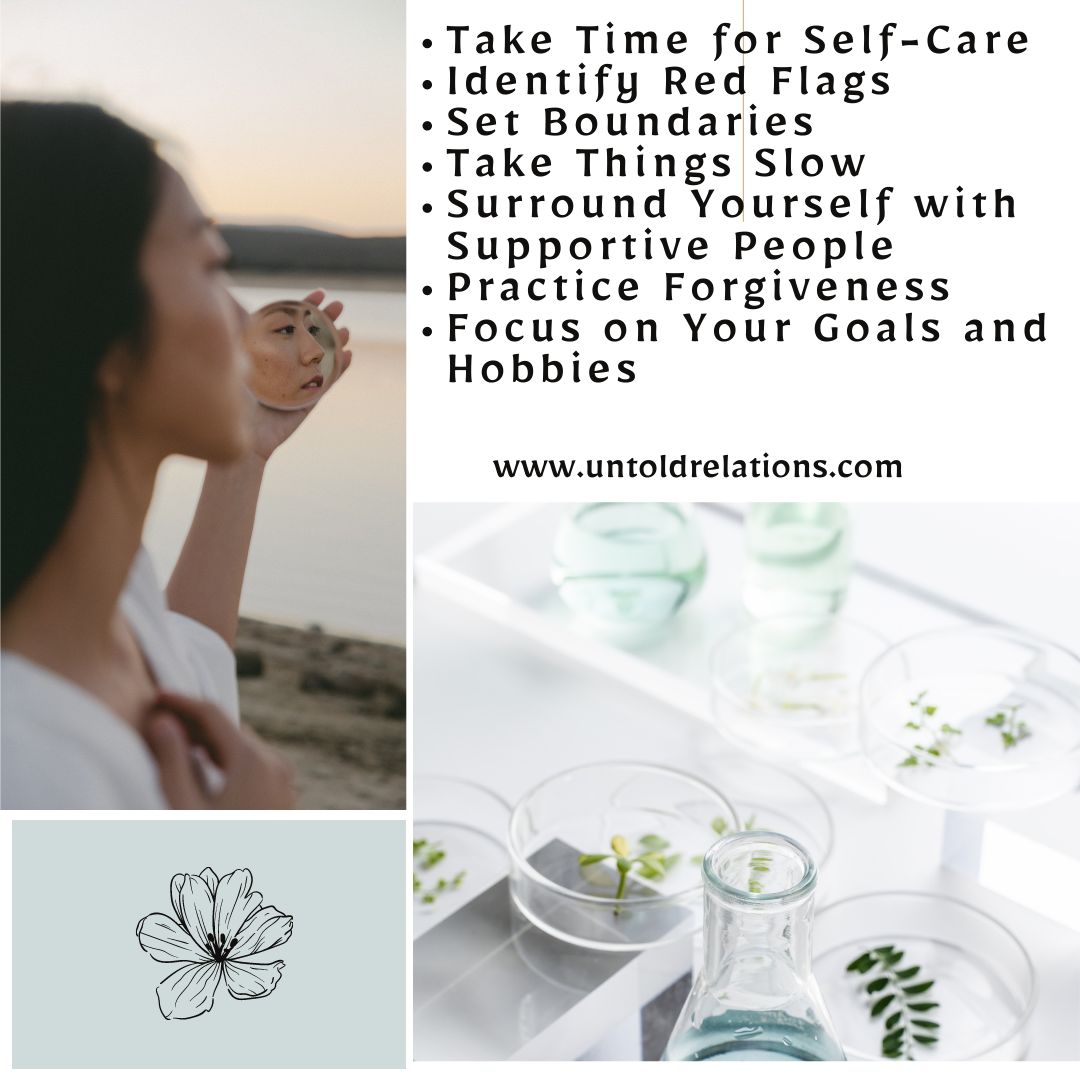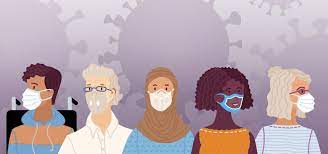Dating after an abusive relationship can be a tough and challenging experience. The wounds of emotional, physical, or psychological abuse can run deep, leaving individuals feeling vulnerable, hesitant, and distrustful of others. It is crucial to take time to heal, reflect, and rebuild self-esteem before pursuing new relationships. Here are the critical healing tips that can help in the journey of moving forward after an abusive relationship. With time, patience, and self-love, individuals can rebuild their confidence, establish healthy boundaries, and develop the skills to navigate future relationships with trust and respect.
 b
b
7 Healing Steps for Dating After an Abusive Relationship
Here are the tips for recovering and finding a healthy relationship after leaving an abusive one:
Take Time for Self-Care
Healing from an abusive relationship can be a challenging journey that requires a lot of emotional, physical, and mental effort. If you are thinking of dating after an abusive relationship, then it is important to prioritize self-care and take the necessary time to heal before jumping into a new relationship.
Self-care can involve various activities such as therapy, exercise, meditation, and spending time with supportive friends and family. It is essential to focus on building a strong sense of self-worth and self-love before starting a new relationship. Taking the time for self-care can help you feel more confident, resilient, and emotionally grounded, which will make it easier to form healthy relationships built on mutual respect and trust.
Identify Red Flags
Identifying red flags is an important step in the healing process after an abusive relationship. It involves being aware of behaviors or patterns in a potential partner that may indicate they are not respectful or trustworthy. Red flags can include jealousy, possessiveness, controlling behavior, aggression, or a lack of empathy. It’s important to trust your instincts and not ignore any warning signs.
Identifying red flags and addressing them head-on can help individuals avoid falling into the same patterns of abuse in the future. It is essential to establish healthy boundaries and communicate them clearly to potential partners, ensuring that they are respectful of your needs and feelings.
Set Boundaries
Setting boundaries is an important step in the healing process after an abusive relationship. It involves establishing healthy limits and communicating them to potential partners. Boundaries can include limits on physical contact, emotional intimacy, communication, or behavior. Setting boundaries helps individuals to maintain control over their lives and protect themselves from further emotional or physical harm. It is important to be clear about your boundaries and enforce them consistently.
Boundaries can also help build trust and respect in a relationship, establishing a foundation for healthy communication and mutual understanding. By setting and enforcing boundaries, individuals can establish a sense of safety and empowerment in their relationships, allowing them to move forward with confidence and self-assurance.
Take Things Slow
Taking things slow is an essential step in the healing process after an abusive relationship. It involves being patient and giving oneself time to heal before pursuing new relationships. Taking things slow allows individuals to rebuild their self-confidence and establish healthy boundaries, reducing the likelihood of falling into the same patterns of abuse. It also allows individuals to get to know potential partners and determine whether they are respectful, trustworthy, and compatible.
Rushing into a new relationship can increase vulnerability and lead to emotional or physical harm. By taking things slow, individuals can approach new relationships with caution, ensuring that their emotional and physical needs are met in a safe and respectful manner.
Surround Yourself with Supportive People
Surrounding oneself with supportive people is an important step in the healing process after an abusive relationship. It involves seeking out positive and trustworthy individuals who can offer emotional support and encouragement. Supportive people can include family, friends, or a support group of people who have experienced similar situations.
Being around supportive people can help individuals rebuild their confidence, process their emotions, and establish healthy boundaries. It also provides a sense of community and connection, reducing feelings of isolation and loneliness. By surrounding oneself with supportive people, individuals can develop the skills to navigate new relationships with trust, respect, and self-assurance, and move forward with confidence.
Practice Forgiveness after Abusive Relationship
Practicing forgiveness is an essential step in the healing process after an abusive relationship. It involves letting go of anger, and bitterness towards oneself and the abuser. Forgiveness is not about forgetting the abusive behavior but about freeing oneself from the burden of carrying negative emotions. It’s a process of acknowledging the pain and hurt caused by the abuse and choosing to move forward with self-love and acceptance.
Forgiveness can help individuals let go of the past and focus on the present, promoting emotional healing and growth. By practicing forgiveness, individuals can cultivate a sense of inner peace and move forward in their journey of healing and building healthy relationships.
Focus on Your Goals and Hobbies
Focusing on personal goals and hobbies is an important step in the healing process after an abusive relationship. It involves rediscovering and investing time in activities that bring joy and fulfillment. By focusing on personal goals and hobbies, individuals can develop a sense of purpose and regain a sense of control over their lives. It’s an opportunity to explore new interests, connect with like-minded individuals, and pursue passions that may have been neglected during the abusive relationship.
Focusing on personal goals and hobbies can also promote self-care and mental wellness, reducing stress and promoting emotional healing. By investing in oneself, individuals can develop the confidence and resilience to navigate future relationships with self-assurance and strength.
Tips for Building Healthy Relationships After Abuse
Prioritizing self-care, setting boundaries, and communicating openly are key to building healthy relationships after abuse.
- Learn to trust your instincts
- Be honest about your past experiences with potential partners
- Consider seeking out healthy role models for relationships
- Take responsibility for your own healing journey
- Communicate openly and honestly with your partner
- Be willing to walk away from a relationship that doesn’t feel safe or respectful
- Don’t compare new partners to your abuser
- Practice self-compassion and self-love
- Work on building self-esteem and self-worth
- Avoid isolating yourself and continue to socialize and make new connections
- Don’t rush into a new relationship to fill a void
- Take time to reflect and learn from past experiences
- Trust yourself to make healthy decisions for your well-being
- Remember that it’s okay to ask for help or support when needed.
Final Thought
Healing after an abusive relationship is a journey that requires time, patience, and dedication. Navigating new relationships after abuse can be challenging, but there are steps individuals can take to prioritize their well-being and build healthy relationships. By prioritizing self-care, practicing forgiveness, and focusing on personal goals and hobbies, individuals can develop the confidence and resilience to move forward in their journey of healing and build healthy relationships with trust, respect, and self-assurance. Remember, healing is a journey, and with time and effort, it’s possible to find love, happiness, and security in healthy relationships.



0 Comments